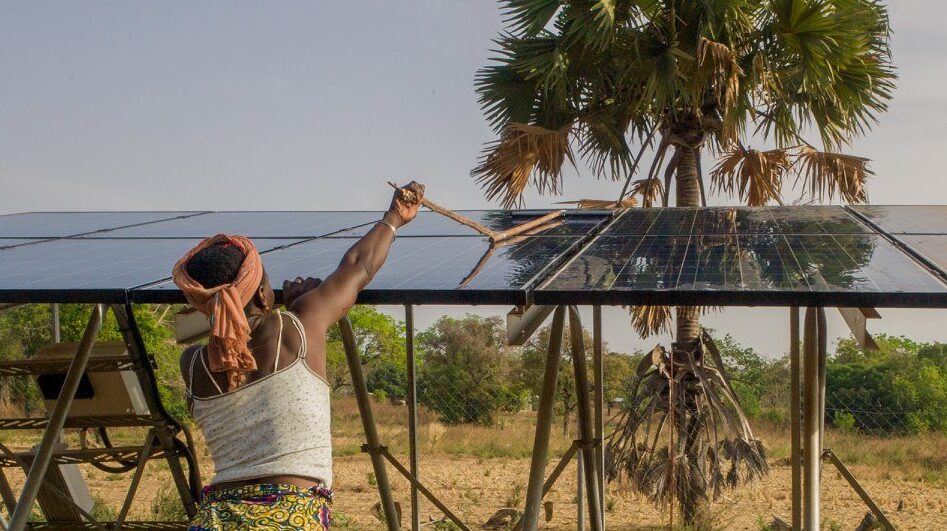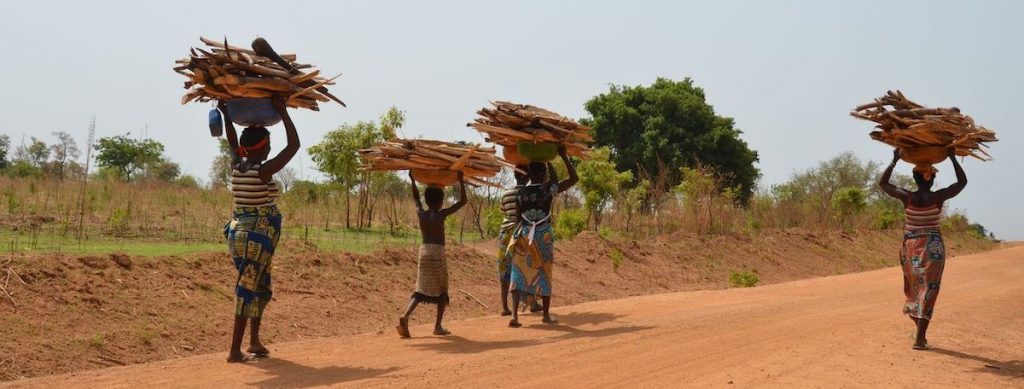
As the climate crisis unfolds before our very eyes, alarming patterns are already emerging in Africa—and elsewhere through the world. Extreme weather events are becoming more common. Droughts are increasing in quantity and severity. Floods are bringing water but no relief. And these patterns aren’t merely environmental. Climate change is also having a profound impact on human lives and livelihoods. Climate change and poverty in Africa will only become more pronounced if action is not taken. However, by understanding these two interlinked issues, we can implement solutions that address both.
Poverty in Africa Today
To understand poverty in Africa today, we need to look backwards. When imperial powers pulled out of the continent in the 20th century, they left arbitrary borders, weakened economies, and fragmented political structures. Important gains have been made since then—life expectancy in sub-Saharan Africa increased from 40 in 1960 to 62 in 2020. But the legacy of imperialism left Africa in an incredibly tough position.
Today, roughly 1 in 3 Africans live below the $1.90/day extreme poverty line. In sub-Saharan Africa, that ratio is even higher. While poverty had been steadily declining over the last decade, the rate of decline has slowed, and inequality has risen. The pandemic has further complicated efforts at poverty reduction and pushed an estimated 37 million more Africans into poverty.
The global community has mobilized significant resources to address poverty in Africa, and over the years, we’ve come to better understand what strategies are most successful and enduring. We’ve made considerable progress in defining and collaborating on objectives through the UN Sustainable Development Goals (SDGs). However, SDG #1—No Poverty—is unlikely to be met before 2030.

Climate Change in Africa
Like poverty, climate change takes a distinct toll on the African continent. In Africa, temperatures are expected to increase faster than the global average, rising 1.5 times higher by 2100. Sea level is also expected to rise more rapidly in parts of Africa, along the tropical and South Atlantic coasts and the Indian Ocean coast. Rainfall is projected to become more variable, with more intense droughts. Africa’s three glaciers, located in Kenya, Uganda, and Tanzania, will melt entirely by 2040.
These changes carry a host of consequences. Shifting weather patterns will wreak havoc on biodiversity across the region. As the planet warms, plants and animals alike will be faced with a new set of conditions to which they’ll need to adapt if they want to survive. Centuries-old ecosystems will collapse.
The Intersection of Climate Change and Poverty in Africa
Climate change and poverty in Africa are increasingly interconnected issues. Many African communities are heavily dependent on rainfed agriculture, while the export economy relies predominantly on primary goods. This creates little buffer between climate shocks and human wellbeing.
We know that these extreme weather events have a greater impact on low-income individuals without the resources to endure them. We’ve witnessed this countless times—from a catastrophic drought in Somalia to tropical storms in Madagascar, Malawi, and Mozambique. These events have a lasting impact, as initial devastation is compounded by the arduous task of rebuilding a life from an empty bank account.
The situation is made more difficult as volatility increases the cost of borrowing, discouraging investments that could help stem climate change and poverty in Africa. A World Bank report found that for every $1 dollar invested in resilient infrastructure in low- and middle-income countries, $4 in benefits is produced. Whether it’s solar energy systems or green transportation, these investments could have massive positive impacts for communities and the planet.

Solutions to Climate Change and Poverty in Africa
Addressing climate change and poverty in Africa requires a strategic, sustainable, and collaborative approach. At SELF, we’ve spent decades working at this intersection, and we’ve learned a few lessons worth sharing.
- Investing in gateways creates results that build. We focus on solar energy because it offers a sustainable platform to open up new possibilities for people—home lighting and cooking, clean drinking water and agriculture, improved healthcare and education options, and more. By focusing on investments that have a domino effect, community development efforts will go further.
- The best solutions are both short-term and long-term. Poverty reduction can require immediate intervention. We can’t lose sight of that. But if we don’t pair short-term alleviation efforts with long-term structural change, we’ll keep fighting the same battle. Wherever possible, efforts to address climate change and poverty in Africa should focus on reducing vulnerability today while building capacity for the future.
- Collaboration is paramount. People know what they need to live healthier, more prosperous lives. We’ve always stood by the principle of self-determination. Organizations and agencies should listen closely to local needs and act as partners to address climate change and poverty in Africa.
Our Whole Village Development Model (WVDM) is a good example of these principles in action. The WVDM focuses on achieving a diverse set of community needs through solar energy, with immediate benefits and sustained positive impacts. First launched in Nigeria, the WVDM introduced a reliable water supply; streetlights; and the electrification of medical clinics, schools, and micro-enterprise centers in Jigawa State.
These are the investments that change lives. Clean water and medical care lead to healthier communities. Better resourced schools allow children and adults to pursue an education. Micro-enterprise centers help local businesses flourish. And it’s all made possible by the power of the sun.
Moving Forward
The issues of climate change and poverty in Africa are ones that the continent never created for itself. As the effects grow more dire by the day, we must recognize our shared responsibility in creating a livable world for all. By working with our African partners and prioritizing sustainable approaches to community development, we don’t need to choose whether to save people or the planet. We can do both.
The threats of climate change and poverty in Africa are great. But with the right approach, our response can be greater.

SELF is a global leader in the fight against energy poverty. Since 1990, we’ve pioneered unique applications for solar energy, powering progress on food security, health care, education, gender equity, and more.
501(c)(3) non-profit organization
EIN: 52-1701564